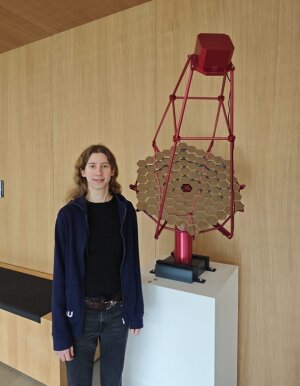- Start
- End
- Types of event
- Physikalisches Kolloquium
- Venue
-
Abbeanum
Fröbelstieg 1, Hörsaal 1
07743 Jena
Google Maps site planExternal link - Livestream
- To the livestreamExternal link en
- Organized by
-
Physikalisch-Astronomische Fakultät
- Language of the event
- English
- Wheelchair access
- Yes
- Public
- Yes
Galactic gamma-ray astronomy: novae, supernova remnants and pulsar wind nebulae
Event details
Dr Alison Mitchell
Image: privatDr Alison Mitchell
FAU Erlangen-Nürnberg
Galactic gamma-ray astronomy: novae, supernova remnants and pulsa wind nebulae
Astrophysical gamma-rays at photon energies above a few GeV are produced by non-thermal processes involving cosmic ray interactions. These cosmic rays are accelerated to high energies within our galaxy at astrophysical shocks, which arise in various environments. In this talk, I will give a brief introduction to gamma-ray astronomy and highlight examples of different source classes. Supernova remnants and pulsar wind nebulae are among the most numerous and powerful of known galactic gamma-ray emitters, reaching photon energies up to ~PeV. Gamma-ray emission from Novae, however, is transient in nature and reaches energies up to ~TeV. These maximum energies were found in 2021-2022, and I will place particular emphasis on recent results and future directions in this talk.
